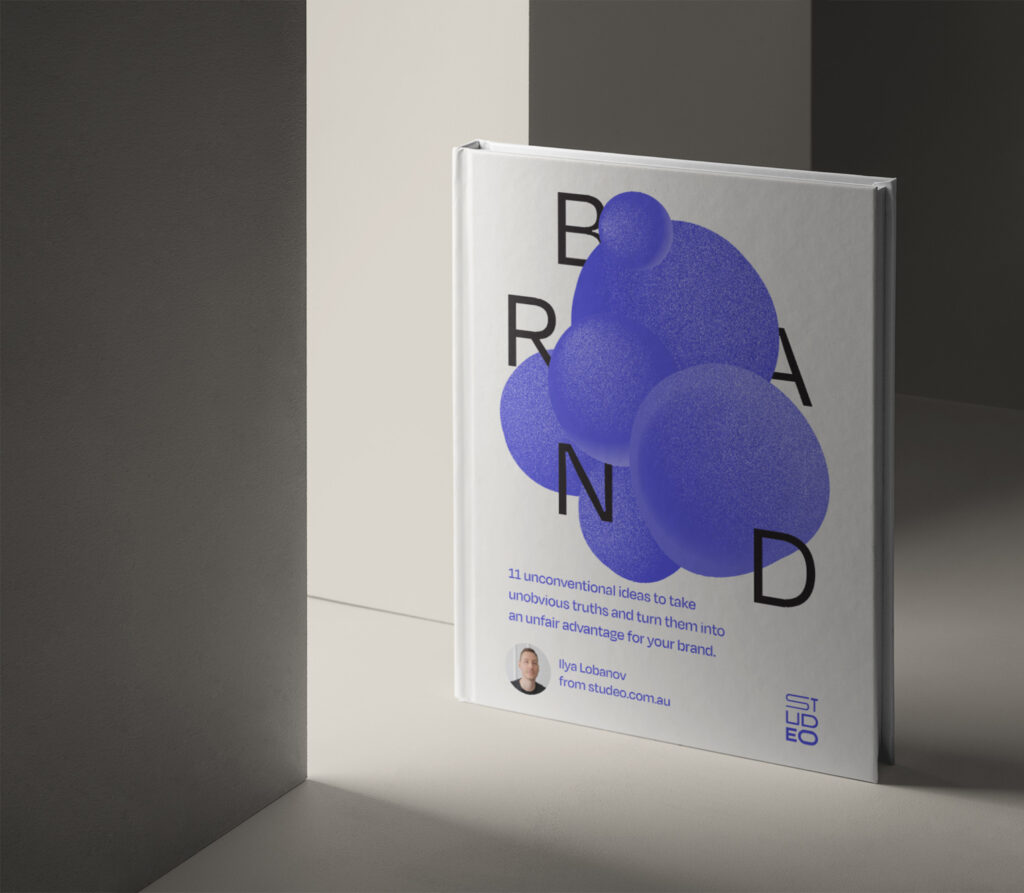How to Design a Unique Logo the Right Way

Designing a logo in isolation could the biggest mistake for your business and brand.
Now that’s a strong statement, I know. But after 15+ years as a designer, I’ve been able to identify a much more effective approach to logo design.
Over the years I’ve had the privilege to work with some stellar clients. The work is always varied, from logo design to websites, from stationery to brochure design and more. I like to think that I’m quite decent at designing, so most projects have gone well for me and the teams I’ve worked with and lead.
But there were also some major failures.
And the major cause of all of those fails? Designing something in isolation without considering the major picture for a brand, the story we are trying to tell and the goals we are trying to achieve.
Enter the Client That ‘Just Wants a Logo’
Sure, as a business owner you assume that getting a logo is your only required component to set up your brand. Heck, I’ve worked with plenty of clients who don’t even think they need that!
But as I’ve written before, a logo is only a tiny component that contributes to your overall brand. And when you design a logo in solitude, especially without a clear strategy in place, it can lead to major frustration both for the designer and the business owner.
When I used to design logos on their own, the biggest pitfall was the client not being able to visualise anything beyond the logo. What would it look like on a website? How about a brochure? Without even realising it, they wanted to see a Brand Identity, but asking for ‘just for a logo’.
I mean sure, a designer can superimpose the logo over a mockup for all of those things. But it still provides no context about how the brand will come to life.
My Logo Design Backstory
When I was just starting as a designer I would present 3 or 4 logo concepts, after our initial conversations with the client. Luckily, most of the time my clients liked at least one concept to progress with. Or in slightly less preferred scenarios, they combined several concepts to create the final logo.
However, there were times when clients told me to start again. It was always a case of aesthetics and personal preference. They just didn’t dig any of my presented concepts, aesthetically.
With successful logo designs, sometimes my clients would also ask to design a business card, letterhead or some other typical marketing item.
And understandably, to get their money’s worth, in their eyes it had to be the most beautiful business card in the world.
Typically this would involve a request for a large watermarked logo. *cringe*
And I can tell you that with my minimalistic approach to design I always battled internally, and debated with clients that a business card doesn’t necessarily need to be over-designed.
But alas it was my design process that was flawed.
My Logo Design Transformation
The biggest flaw I identified with how I approached logo design in the past was always personal preference and aesthetics. With the logo concepts, the client and I only ever saw a tiny piece of the much larger branding puzzle. Naturally, that meant that it was hard to decide on whether this logo solved a problem on a larger scale.
Fast forward about 10 years and I now implement a much more effective process where my success rate for presenting concepts has steadily remained at 99%. Most importantly, this is much better news for the business owners!
So what’s changed and how can you take advantage of my story in getting a logo designed for your business?
In a nutshell, when I design a new logo concept for a new client today, I no longer just present a logo. I typically create an entire Visual Brand System.
Yes, it might require a larger budget than a simple logo design, but the benefits are worth it. And after I explain these to the business owner, the advantages more than justify the investment.
Tell Me the Benefits, Ilya!
- The secret to creating a timeless logo and look and feel without drowning in a sea of colour schemes and fonts is a clear, strategic process. Using Brand Strategy as a foundation to create a memorable Brand Identity means that a designer and you both clearly define what your brand needs to achieve, so you know exactly what to expect.
- Establishing an underlying goal and objectives that you are trying to communicate to your clients will help you to easily judge whether the visuals answer the brief. Many brand designers will include a Brand Strategy process as a supplementary offer to your Brand Identity design.
- As part of the Brand Identity process, a designer will typically present you with application examples that go beyond the logo concept. These can include colours, typography, and any number of other things like icons, illustrations or patterns. Basically whatever would help the designer communicate their main concepts of the brand and how it would all come together. This means you will get a bird’s-eye view into how your brand will come to life, rather than trying to visualise it or assume things.
- The ultimate goal for creating the Brand Identity is to provide all the tools necessary for you as a business owner to create anything you may want to in the future. As you will have enough application examples presented, you can either use these designs as a foundation to create your marketing materials (or always ask a designer to roll these out for you as well).
Recommendations for Business Owners
As a business owner, it’s important to understand the true benefits a Brand Identity can offer.
When you are only getting a logo designed, you are limiting yourself in seeing all of the possibilities of your brand. A comprehensive Brand Identity paired with a Brand Strategy can help you create a unique and memorable brand that will last you for years or even decades.
This will ensure that you are proud to display and showcase your brand. It will give you the best chance to stand out in a sea of competitors with your unique look and feel. And ultimately it will help you attract the right customers.
So if you’re an entrepreneur setting up a new business, remember that you want to approach designers to create a Brand Identity System for you, not just a logo.
Now Over To You
I want to hear about your experiences with logo design and branding– reach out via email or on Instagram and let’s get a discussion going!
If you enjoyed reading this article, consider signing up to the Studeo Insider and receive more insights like this one. If you know someone who might enjoy this article, please share it.
